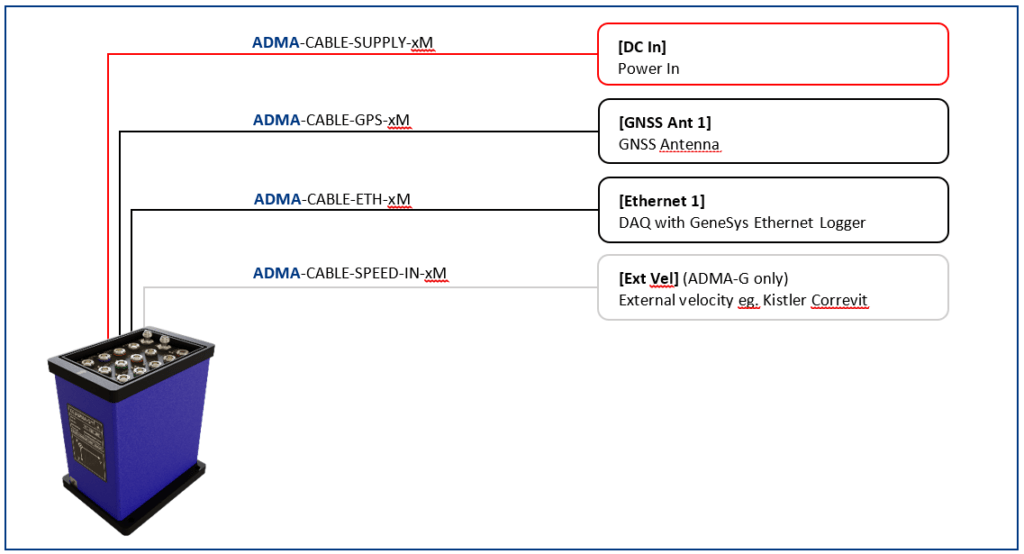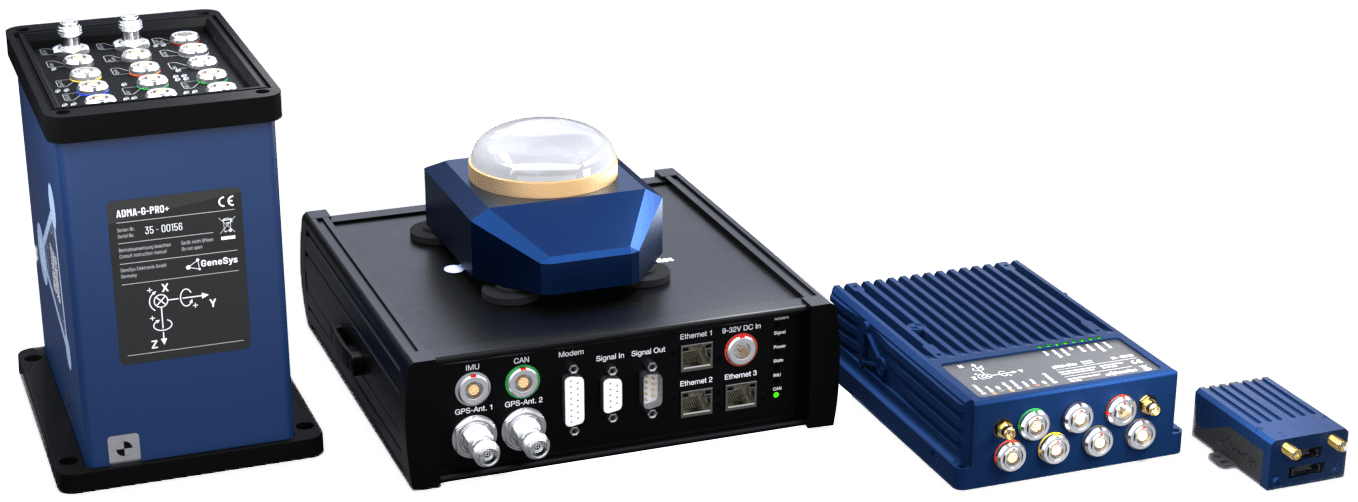If the ADMA is supplied with an external velocity signal, the orientation angles for roll and pitch do not drift, thus permitting measurements over longer periods.
Supply of an external velocity signal allows the ADMA to calculate a relative position using the method of dead reckoning. In this case, the position error no longer increases quadratically with time, but instead exhibits a linear behaviour. The position is relative to the measurement’s starting point and depends on the course as well as the external velocity.
ADMA with external velocity measurement and DGNSS
As with pure (D)GNSS augmentation, this operating configuration constitutes the most advanced system stage providing the best possible performance. A determination of absolute positions with (D)GNSS allows the most accurate inertial measurements.
Should the reception of the (D)GNSS data be interrupted, position measurement is performed by the ADMA. But with augmentation available (external velocity measurement) a dead reckoning position can be calculated. Thus, the position accuracy degrades only linearly during GNSS outages. On re-entry of valid (D)GNSS data the ADMA takes up GNSS/INS operation again.
Optionally, a dual-antenna DGNSS capable of calculating course and yaw angle can be used. The starting alignment is automatically detected at the beginning of a measurement as well.
The ADMA has implemented an “Extended Kalman filter”, which during the ADMA GNSS/INS-mode determines and compensates possible errors of the external velocity signal, like bias and scale factor. Consequently, there is a calibrated speed signal even with a GNSS outage occurring.
Note: This function is not available with ADMA-Speed and ADMA-Slim systems.
Wiring external velocity
The following diagram shows an example wiring of the external velocity and data logging via Ethernet for use with GeneSys “ADMA-PP” Post Processing Software.

Setup and configuration
At the dialogue Auxiliary Systems, the external velocity signal for additional support of the Kalman filter can be configured. It is possible to input analog or digital speed sensor signals. Depending on the velocity source.

There is also the possibility to have the ADMA estimating the X scale factor of the external velocity sensor automatically. Therefore, an External-Velocity-Kalman filter is implemented, which has 3 Modes available:
• Off Ext-Vel-Kalman filter is deactivated
• Once Ext-Vel-Kalman filter is activated and will be deactivated upon successful estimation
• On Ext-Vel-Kalman filter is permanently activated
The determined scale factor is saved for further measurements. The scale factor estimation of the external velocity sensor is signalled by two status bits (see Technical Documentation).



